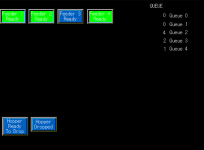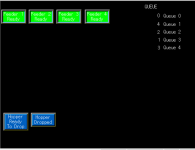sir's
I have a weighing machine needs to be retrofitted .the machine have 14 hoppers with a load cell attached to each one.
the signal from the load cell is connected to an amplifier with output signal 0-10v.Can I use a Plc with analog input modules in order to compare the weigh in each hopper(channel) with a preset value and produce an output signal to the corresponding solonoied valve to discharge this weigh in a packing machine.Is there any limitations for the plc time responce(scan time)?.Is this system will be an accurate & productive one?.
I am waiting for your valued responce
I have a weighing machine needs to be retrofitted .the machine have 14 hoppers with a load cell attached to each one.
the signal from the load cell is connected to an amplifier with output signal 0-10v.Can I use a Plc with analog input modules in order to compare the weigh in each hopper(channel) with a preset value and produce an output signal to the corresponding solonoied valve to discharge this weigh in a packing machine.Is there any limitations for the plc time responce(scan time)?.Is this system will be an accurate & productive one?.
I am waiting for your valued responce







